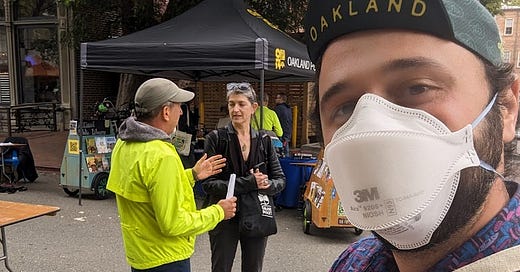Writing an effective bike, transit, or street safety petition
Petitions are a foundational tool in transportation advocacy
You are not alone in wanting the bike, transit, or street safety changes you want in your community. Part of how you win those changes is to show decision makers that your demand is a popular one. Rallies, public comments, and all sorts of other actions help demonstrate that popularity, but crowds don’t come out of thin air. First you need to find and connect with the people who would support the idea. Petitions are an excellent tool for the task.
As I’ve written about before, petitions can be powerful political tools & organizing tools and are one of the basic building blocks of your bike, transit, or street safety campaign. As political tools, petitions can show decision makers how popular an idea is. As organizing tools, petitions help organizers collect contact information of people who are supportive of an idea and would likely appreciate an invite to a rally or other follow-up action.
Three elements go into an effective petition:
1) It is easy to sign
2) It is useful for you as an organizer
3) It is compelling to sign.
When it comes to making your petition easy to sign, remember that each step you create for your potential signer adds a bit of friction to their experience and lowers your conversion rate of potential signers to signers. Design your petition to smooth out that process as much as possible by asking for the bare minimum. Generally that is first & last name, zip code (to validate the locality of the signer), and ideally one bit of contact information for the signer so you can follow up with them. Email is best, but not everyone wants to give that out so consider making that optional. You might want to ask further questions, like “would you like to volunteer”, but you can save that for a follow up ask. Everything else you ask for makes signing your petition more annoying. You can also make your petition easy to sign by making it signable in a digital and physical format. Don’t miss out on potential signatures because someone wants to do one, but not the other. Having two petition formats means you do need to put in the work of compiling all the signatures in a central location, but it’s likely worth it. And of course, make your petition easy to sign by putting it out in a bunch of different ways in your community!
Making your petition useful for you as the organizer can be tricky as there are some pitfalls to avoid. One of the pitfalls is using too specific of language which boxes you in, or conversely, using too general of language which allows the decision maker to wriggle out of their responsibility to act. Transportation advocates often deal with slippery opponents so you need to be explicit in what you are calling for, but not so explicit that you cannot use it to bolster other arguments. In other words, your petition should affirm the overall values you are going for and make a specific demand. An overly broad bike lane petition allows politicians to wriggle out and say, “the community wants bike lanes, but it doesn’t have to be THIS specific one.” Whereas an overly specific petition shows support for JUST that bike lane, but not bike lanes elsewhere in the city.
The other thing to watch out for is online petition platforms like Change.org which only allow for communication with signers via their platform. I, unfortunately, learned about that feature the hard way and so I recommend settling up a Googleform, ActionNetwork or using another platform where you can better access the information you gather.
Finally, the petition needs to be well-written, so it is compelling to sign. A petition is effectively a letter to a decision maker signed by lots and lots of people, so start off with who it is addressed to. Then in the intro, briefly say who the petition is from (e.g. “We, the undersigned, as people who care about…”). Following up with introducing why the petition exists, highlighting the problem you want to solve. State your values in a clear, concise, punchy way that captures attention and wins over allies. If you want to elaborate more on your values and goals and how it ties into the problem the document is addressing, you can– but aim for a short 1-page petition at a maximum.
Make sure to broaden your appeal and give lots of reasons why your solution is right (e.g. “to improve safety, economic development, accessibility, and equity, we must…) . You might not know which item or which combo of items will appeal to your audiences, and it’s ok to list lots of reasons why you are in the right. Just make sure to use language your audience understands and that resonates with them.
End with the specific demand and feel free to add a little flourish that restates the overall values (e.g. “we look forward to making our community one where…. Sincerely,...”).
With that, you should be ready to circulate your petition! If you need help or have questions, let me know and I’ll be happy to assist as I can. Good luck out there.
Need help winning transportation changes in your community? I’m here to help! Whether you want a 1-on-1 training session or a group workshop, let’s talk. Email me at Carter@carterlavin.com to set something up.
Donate to help get more bike, pedestrian and transit activists trained across the country!
Interested in sponsoring the training of an activist working on an issue you’re passionate about? Let’s chat. Carter@carterlavin.com



